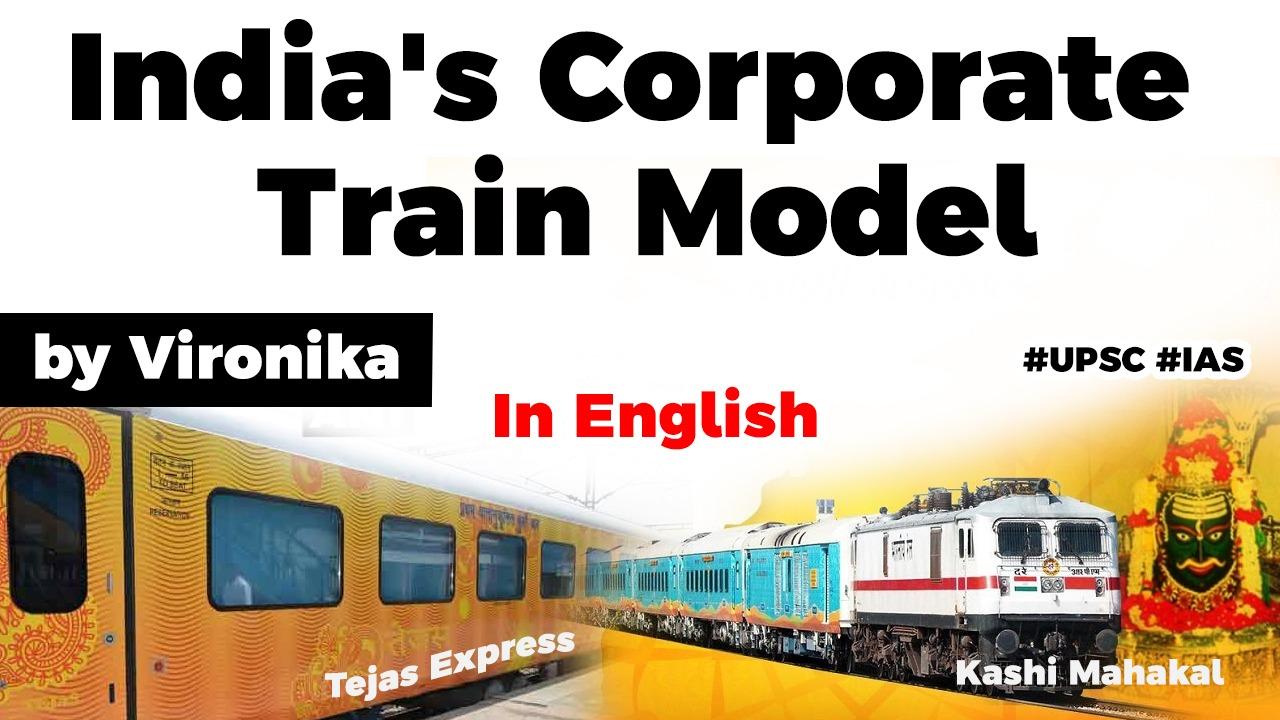Table of Contents
- The Kashi Mahakal Express is the country’s third ‘corporate’ train after the two Tejas Express trains between Delhi Lucknow and Mumbai Ahmedabad.
- This is a new model being actively pushed by Indian Railways- to ‘outsource’ the running of regular passengers’ trains to its PSU, the Indian Railway Catering and Tourism Corporation (IRCTC).
Corporate Train Model
- In this model, the physical infrastructure of the train such as locomotives, coaches, loco pilots among others will remain in the Indian Railways’ hands.
- However, the services provided including ticketing and refunds, parcels, catering and housekeeping will be outsourced to Indian Railway Catering and Tourism Corporation(IRCTC).
- Haulage – The haulage charge is to be paid by IRCTC.
- Lease – IRCTC has to pay the lease charges on the rake as Indian Railways coaches.
- Custody
- In other words, IRCTC has to pay Indian Railways a sum total of these three charges, roughly Rs 14 lakh for the Lucknow Tejas runs in a day (up and down) and then factor in a profit over and above this.
- This money is payable even if the occupancy is below expectation and the train is not doing good business.
- Being a corporate entity with a Board of Directors and investors, IRCTC insists that the coaches it gets from Railways are new and not in a run-down condition, as is seen in many trains.
- The quality of the coaches has a direct bearing on its business.
- The bright side for Indian Railways is that it doesn’t have to suffer the losses associated with running these trains thanks to under-recovery of cost due to low fares and its own hefty overheads.
- Private players may not need to pay lease and custody charges as it is expected that they will bring in their own rolling stock.
- All this is because over the next five years, after the two dedicated freight corridors are operationalised and a lion’s share of freight trains move to the corridors, a lot of capacity will free up in the conventional railway lines for more passenger trains to run to cater to the demand.
- To meet growing passenger demand: Indian Railways runs around 13,000 passenger trains every day and an additional requirement of 3,000-4,000 trains is estimated.
- Over the next five years, after the two dedicated freight corridors are operationalised and a lion’s share of freight trains move to the corridors, a lot of capacity will free up in the conventional railway lines for more passenger trains to run to cater to the demand.
Privatisation of Indian Railways
- The Bibek Debroy committee recommended that the rail industry needs to be liberalized by allowing the entry of private operators to provide services.
- Low Quality of Service, Catering and Punctuality
- Low Internal Revenue
- Cross subsidization
- Increasing Number of Accidents: Repeated railway accidents have further raised questions on government ownership of railways.
- Improved Infrastructure
- Normalization of prices due to the competition
- Improved Security
- Better Technological Innovation:
- Limited Coverage
- Lesser Inclusive
- Issue of Accountability
- Impact on the Economy:
- It is difficult to privatize a portion of the railways’ operations
- Core Railways functions can be Corporatizied rather than privatized.Corporatization refers to the restructuring or transformation of a state-owned asset or organization into a corporation. These organizations typically have a board of directors, management, and shareholders.
- However, unlike publicly traded companies, the government is the company’s only shareholder, and the shares in the company are not publicly traded.
Latest Burning Issues | Free PDF






















 WhatsApp
WhatsApp